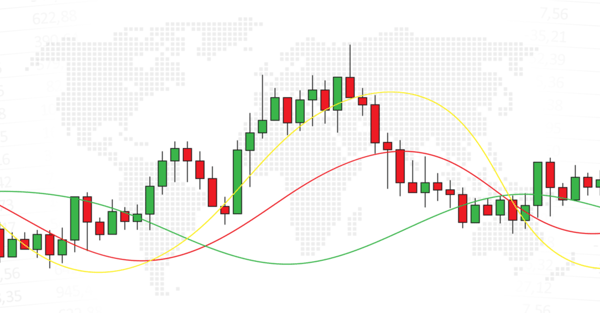Many consider Forex trading as a potential source of passive income, but most of them find it hard to pursue currency trading while working from nine to five. What if we tell you that you can learn to trade and develop essential skills without quitting your day job? You can do both without necessarily sacrificing one for the other.
All you need to do is to establish core guidelines that can help you day trade with a full-time job and make a profit.
How to Trade Even with a Job
1. Plan your charts beforehand
If you set up your charts during the weekend, you don't have to waste time charting and analysing during the trading week. All you have to do is to wait for the price to move to your entry before you execute.
You can also do all your analysis around your job, especially if you only want to trade part-time. If you work days, you do all your analysis at night. Do the opposite if you work nights.
You can also do your research before or after work, whichever is most ideal for you. Another option is to work out potential trading strategies outside market hours.
Now, whenever you run your analysis, remember to always:
- Set a time limit and stick with it.
- Do your analysis when you're in a great mood. Like most things, you won't see clearly if you're emotional or stressed out.
- Study the charts based on a specific trading strategy. If you don't see your set-up, you're done for the day.
2. Trade during the best Forex market hours
This means trading during sessions with very high liquidity, which is usually during the London & New York sessions. Market liquidity is highest during the London session because most multinational banks have branches in the city.
During these times, spread is reduced and you can profit from high volume market movements.
Another strategy is to trade at times when your currency pair is most active. If you want to trade the EUR/USD pair, for example, set aside time for trading from 8:00 a.m. to about 11:00 a.m. EST or from 1:00 a.m. to 8:00 a.m. EST.
Most movements for this currency pair happen during these times or around and a few hours after the US stock market opens.
Find out when you can catch the best price movement for certain currency pairs and then organise your schedule accordingly.
3. Use the correct trading strategy according to your schedule

Different strategies look at different timeframes.
If you can only spare 30 minutes to one hour in between work, use intra-day or swing trading strategies so you won't have to stare at the charts for a good chunk of your day. If you don't mind doing this, however, scalping is a more suitable strategy for you. This is especially true if you're into fast-paced trading.
Day traders usually spend one to three hours to trade and you can too. But you may not need to take that long with the right strategies.
Check out: Trading Rules by Great Trader, Jesse Livermore.
4. Continue to improve your trading skills
You need to continuously work to improve your skills if you want to keep up with the constantly changing Forex market.
Start by monitoring your weekly performance and analyse your results. Find out what you can do better. Then, identify your trading mistakes and learn from them.
You should also read Forex books to gain a better understanding of the market and the strategies you can use. We recommend that you read the 17 Proven Currency Trading Strategies: How to Profit in the Forex Market by Mario Singh. It's hailed as the ultimate guide to successful Forex trading for a reason.
5. Be consistent
Consistency and practice let you reap amazing rewards in Forex. This is how you develop your skills and discover high-earning strategies. This is also why we don’t recommend switching strategies frequently.
What does consistency mean exactly in Forex?
- Trading regularly on a part-time basis following the same schedule.
- Trading using the same set-up and strategy even when you close with a loss.
- Having a set of rules and guidelines that you follow without fail.
By being consistent, you will become a consistently profitable trader, which is without question the dream of every Forex trader. Moreover, it will help you develop a routine that will come handy when you decide to quit your job and trade full-time.
Learn How to Deal with a Losing Streak in Forex Trading?
Ready to become a part-time trader?
In closing, we want to let you in on a secret--full-time trading is fundamentally a part-time activity. Because once you have a sound strategy and routine, trading becomes automatic. So there's no need to study the markets or watch the price movement all night or day.
We also highly advise against quitting your day job until you've acquired the skills and knowledge that will make you a profitable Forex trader. Think of your nine-to-five as insurance, providing you with a regular and consistent income while you earn on the side.
If you quit and then start learning to trade, you're likely to make emotional trading mistakes. Because all you'll be thinking about is that you must earn a profit or there won't be food on the table.
As a way to make trading easier on your part even with a nine-to-five job, consider automating your trades through copy trading. By investing in an experienced trader, you can make a profit on autopilot.
Ready to grow your wealth in the world's largest financial market? No better place to start than right here with us! Begin trading with Fullerton Markets today by opening an account:
You might be interested in: Forex Mentor: 7 Habits of Great Forex Traders











